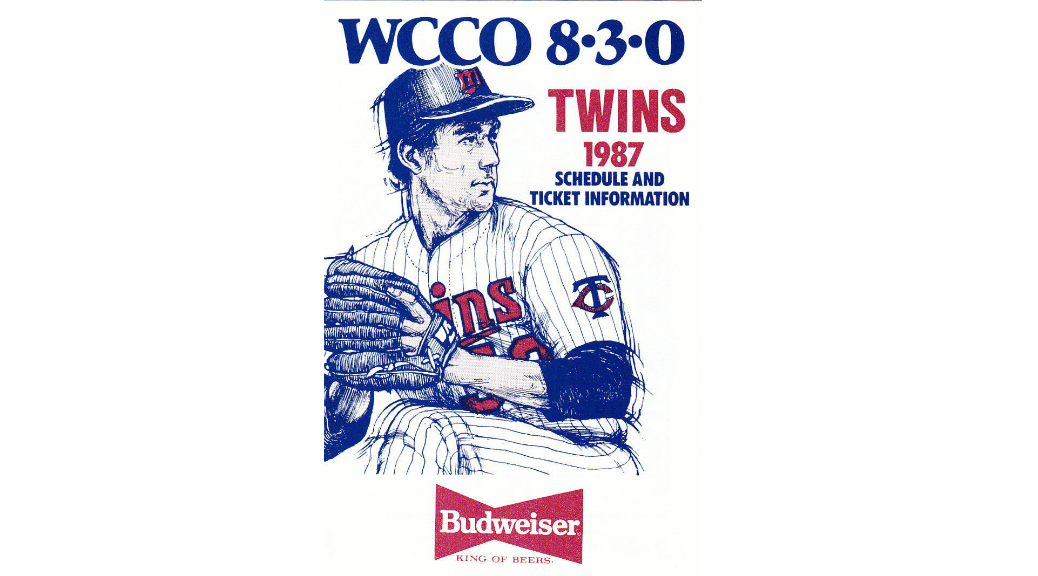MINNESOTA 4, OAKLAND 1 IN MINNESOTA
Date: April 8, 1987.
Batting stars: Tom Brunansky was 1-for-3 with a home run and a walk. Kirby Puckett was 2-for-3 with a double and a hit-by-pitch. Greg Gagne was 2-for-4 with a double.
Pitching stars: Frank Viola struck out eleven in six innings, giving up one run on five hits and three walks. Keith Atherton pitched two shutout innings, giving up a walk and striking out one. Jeff Reardon pitched a perfect inning.
Opposition stars: Carney Lansford was 1-for-3 with a walk and a stolen base. Eric Plunk pitched seven innings, giving up four runs (three earned) on seven hits and four walks with four strikeouts.
The game: The Twins scored two in the first on a walk, a single, two ground outs, and a wild pitch. They added single runs in the fourth and fifth. The lone Oakland run came in the sixth. They did not bring the tying run up to bat.
Of note: Kent Hrbek was 1-for-3 with a walk and an RBI.
Record: The Twins were 2-0, tied for first place with California.
Notes: I had forgotten that, in fact, Tom Nieto was the starting catcher for about the first month and a half of the season...Dan Gladden was apparently fighting a minor injury at the start of the season. After DHing in the first game, he did not play in this one, and would be used as a pinch-hitter a couple of times before making his first Twins start in the outfield on April 12. Brunansky moved over to left in this game, with Randy Bush in right...Reggie Jackson, in his last season, was used as a pinch-hitter and struck out. He was batting for DH Ron Cey, also in his last season.


I've always thought "Plunk" is a top-shelf surname for a pitcher.
I don't have much memory of Randy Bush's arm, but I suppose his range was the factor that led to playing him in right and shifting Bruno. From '82-'86 Bush played 920 innings in left, which accounted for 77% of his career innings in left. From '87 on he was pretty much exclusively a RF and occasional DH/1b. This game was the first time since 1982 that Bruno played in left. Yet, somehow, Bruno logged 276.0 innings in center from '83-'86.
Scot's piece that I linked to yesterday indicates Gladden was going to be used as a platoon player, but he was upset with the arrangement and had words with TK about it.
He did have near identical lines batting against righties, .244/.315/.360, and lefties, .258/.307/.362. He did hit lefties better for his career, but that didn't really happen until 1988, when he slashed a great .321/.388/.509 against them.
Seeing those numbers for Gladden makes me feel better about Rosario.
Bush was definitely not much of a defender. I think if he was decent at all as a defender, he would have been in the lineup a lot more against righties. Found a great niche as a pinch hitter, though.
I'm confused. Bush was a semi-regular for years.
Bush might have been a poor defender, but his managers utilized him pretty much exactly the way Gardy should've utilized Jacque Jones up until the point Bush had no business being a platoon regular.
In 1987, Bush started 59 games in the OF. For a good-hitting left-hander that is being platooned, you would expect him to be starting roughly about 2/3 of the games. Bush is 39th all-time in PAs as a pinch hitter despite playing his entire career for the Twins and never playing in a game without a DH.
Games started is one of several ways of defining a platoon player. (Not to mention you left out 14 GS between 1b & DH in '87). We might expect the strong side of a platoon to start 2/3 or more of the time in a vacuum. But there are enough variables in lineup construction that I think PA is a better measure of a player’s platoon role, particularly if we look at splits for starter vs. sub to get a more comprehensive picture of how a player was used.
Bush was the primary DH in '83 & '84. If you assume 600 PA is roughly "full-time" for a position player, Bush's PA were 69% of "full-time" in '83 and 59% in '84. Bush was the primary LF in ’86 (67%), and the primary RF in ’88 (77.7) & ’89 (74%).
Brunansky was the primary right fielder through 22 April 1988; Bush wasn't going to take playing time from Bruno. Mickey Hatcher was the primary left fielder in 1984 & 1985 (OPS+ above 100 each season). In 1985 the Twins had four different players other than Bush listed as DHs Smalley (primary), Stenhouse (lefty DH/1b/OF with 204 PA vs RHP, 175 PA as Starter, 103 PA as DH), Engle, and Funderburk. Bush had the most PA of any non-primary.
Basically, Bush was a semi-regular who averaged 58.9% of a “full-time” role from 1982-1989, and that includes his rookie year when he didn’t start playing until May, and then was out from mid-May to early July. Start the clock in ’83 and Bush hits 64% of “full-time” – basically exactly what you’d expect in real-world conditions.
As for Bush as a pinch-hitter, that’s a harder thing to pin down. Bush certainly totaled the most PA as a PH during his time with the Twins (362 PA vs. Larkin’s 109), which would seem to support the claim. However, pinch-hitting is a situational role with even higher variability than closer (another situational role as it’s commonly employed). Bush could only be the primary pinch hitter during times he wasn’t playing, and with Bush not on the bench, the manager’s choice for pinch-hitter was much less obvious. During Bush's career, twelve other Twins logged 50 or more PA as a PH (Larkin, Smalley, Moses, Hatcher, Engle, Hale, Newman, Laudner, Castillo, Hrbek, Dwyer, and Salas). Save for Hrbek and perhaps Smalley, none of those guys was going to present a compelling case for PH PAs on ability alone; the manager would’ve been playing situational match-ups.
The other situational factor is the manager’s propensity to use pinch hitters. Bush might have been the primary pinch hitter for the Twins when his managers decided they wanted a bat off the bench and Bush was available, but he didn't distinguish himself as a pinch-hitter among his contemporaries. From the beginning of the DH era through his final season, Bush had exactly one season in the top 120 for PA as PH – it's 1992 at #120. His 362 total PA as PH is 16th among players active between 1973-1994. Heck, Bush is still 5th in total PA as a PH if you restrict the window to just the years he was active.
All in all, here’s how the platoon vs. pinch-hitter question shakes out by PA :
So, yes, Bush was utilized in sub roles more in 1987 than he had been previously, but he was still pretty close to 60% of the "full time" threshold of 600 PA. He was squeezed out of playing time in the outfield by Gladden's emergence as a speedy, good-glove guy who TK was going to hit leadoff. Bush didn't possess any of those qualities. He was never going to take playing time from Hrbek or Bruno. As for DH, Smalley (the primary) was a switch-hitter who got less than 10% of his PA against LHP, and Larkin (another switch-hitter) was effectively Smalley’s platoon-mate (second-most PA as DH, 66.4% of total PA vs RHP). Then there’s the fact that, despite his increased use as a sub, Bush (and Al Newman) actually totaled more PA than two “regulars” – Smalley & Laudner.
I think more than the range factor was that he was a lefty, which plays better in RF than LF, particularly if you're a borderline defender.
This was really kind of a big series since the A's were in second place for much of the season before the Royals came on at the end. Who would have thought at the time this series was played that it was between the 2 teams that would win the next 5 AL pennants.